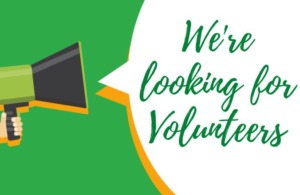High Blood Pressure Education Month







National Infant Immunization Week is a yearly observance highlighting the importance of protecting children two years and younger from vaccine-preventable diseases. CDC and the American Academy of Pediatrics recommend that children stay on track with their well-child appointments and routine vaccines. On-time vaccination is critical to provide protection against potentially life-threatening diseases.

 | WEST VIRGINIA Division of Personnel 1900 Kanawha Blvd. East, Building 3 Suite 500 Charleston, WV 25305 |
| invites applications for the position of: Nurse 2 – Doddridge County Health Dept. – Doddridge Co. An Equal Opportunity Employer | |
| SALARY: | $2,999.50 – $5,549.08 Monthly $35,994.00 – $66,589.00 Annually |
|---|---|
| DEPARTMENT: | HD09-Doddridge County Health Department |
| OPENING DATE: | 04/04/23 |
| CLOSING DATE: | 04/19/23 11:59 PM |
| LOCATION OF VACANCY: | DODDRIDGE |
| NATURE OF WORK: | |
***SPECIAL ANNOUNCEMENT – DODDRIDGE COUNTY*** This announcement is for an immediate hiring need with Doddridge County Health Department located in Doddridge County. When applying online, be sure to mark this county and any other county you would be willing to work in, so your name can be placed on the proper register. See below for special application instructions and a description of the position. HOW TO APPLY: CLICK HERE to Apply Online. You will be redirected to our Nurse 2 “continuous” listing where you will be able to submit your application by clicking the APPLY link at the top right of that page. THE POSITION: Doddridge County health department. Duties of a public health nurse include but are not limited to the following: the nurse provides immunizations to citizens of all ages, supervises other nursing staff and office staff as needed. Does testing and counseling of people who may have any communicable and or sexually transmitted disease. Teaching can be done on results of laboratory testing and how to prevent the spread of theses diseases as well as giving medications to treat the disease as needed. Will do active surveillance and identification as well as treatment and follow up of these cases of communicable disease and contact tracing of any communicable disease if needed. Teaching on how to prevent communicable disease is essential as well as how to treat and prevent the spread in cases that are identified. Does counseling and risk assessment to see if clients need tested for Tuberculosis. If positive then the nurse would prepare the medications as ordered by the physician. Prepares various reports to be sent in support with all state programs, Inventory of Immunization, STD, Family Planning, Breast and Cervical Screening, and general health/lab monthly. Enters reportable diseases into WVEDS program as well as entering Immunizations into the WVSIIS site. Will organize and work directly with Threat preparedness staff in developing Strategic National Stockpile response plans, recruitment and credentials of volunteers, training of SNS procedures. Performs any duties assigned by administrator or Board of Health. Continues to learn more nursing theory through self development such as reading, seminars and practice. As a condition of employment, an inquiry into job-related information will be completed which may include, but not limited to, criminal records, abuse registry records, driving records, employment history, and education and training. Failing to cooperate with this process, providing false or incomplete information, and/or discovery of disqualifying information may result in denial of or dismissal from employment or denial of transfer irrespective of when discovered. | |
| EXAMPLES OF WORK: | |
| MINIMUM QUALIFICATIONS: | |
Training: Successful completion of an Associate degree in nursing from a regionally accredited college or university or a diploma nursing program; plus one year of full-time or equivalent part-time paid experience as a registered professional nurse. OR Baccalaureate degree in nursing from a regionally accredited four year college or university. Special Requirement: Current West Virginia license or temporary permit to practice as a registered professional nurse. ***DETAILS OF RELATED EXPERIENCE MUST BE SHOWN IN THE WORK EXPERIENCE SECTION OF YOUR ONLINE APPLICATION*** | |
| OTHER INFORMATION: | |
Special hiring rates:
| |
| APPLICATIONS MAY BE FILED ONLINE AT: http://www.personnel.wv.gov 1900 Kanawha Blvd. East | Position #9606SP NURSE 2 – DODDRIDGE COUNTY HEALTH DEPT. – DODDRIDGE CO. AS |
 Are you or someone you know interested in becoming a Volunteer?
Are you or someone you know interested in becoming a Volunteer?
Volunteers are a vital part of the planning process for community survival in a time of crisis. There is no age limit to be a volunteer! We will be holding a Volunteer Meeting/Training on June 22, 2023, at Doddridge County Park
(upstairs-Main Building) 4pm-6pm
For more information or to sign up please call: 304-873-1531 ext. 104
You may also stop by Doddridge County Health Department to fill out an application
Daylight Saving Time begins Sunday, March 12, 2023. As you prepare to set your clocks forward one hour, remember to check the batteries in your carbon monoxide (CO) detector and smoke detectors.

